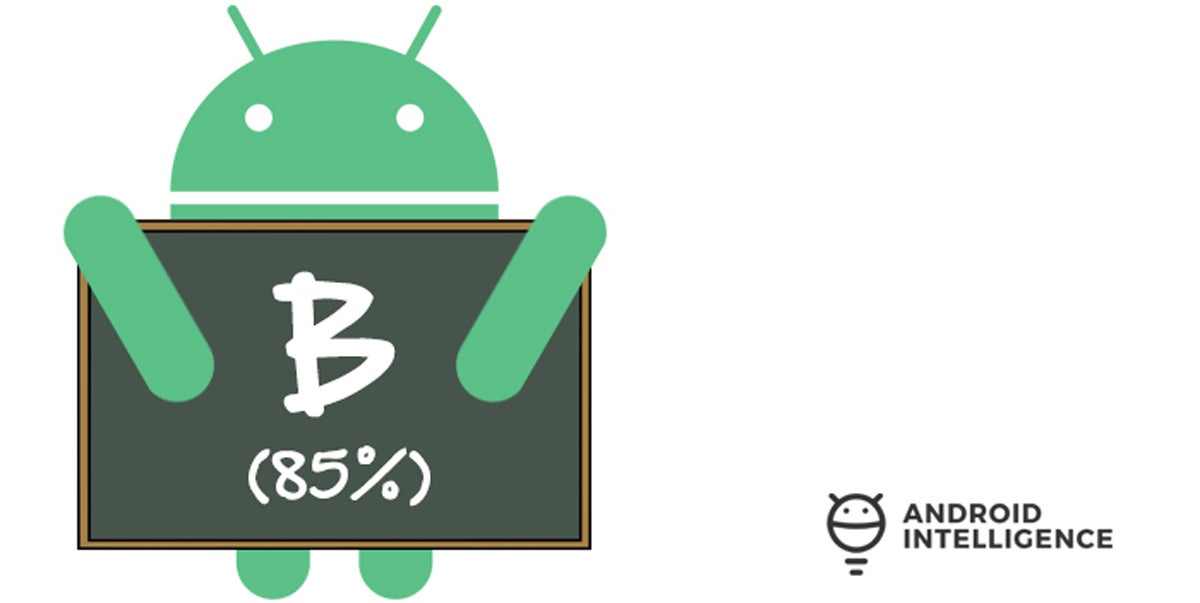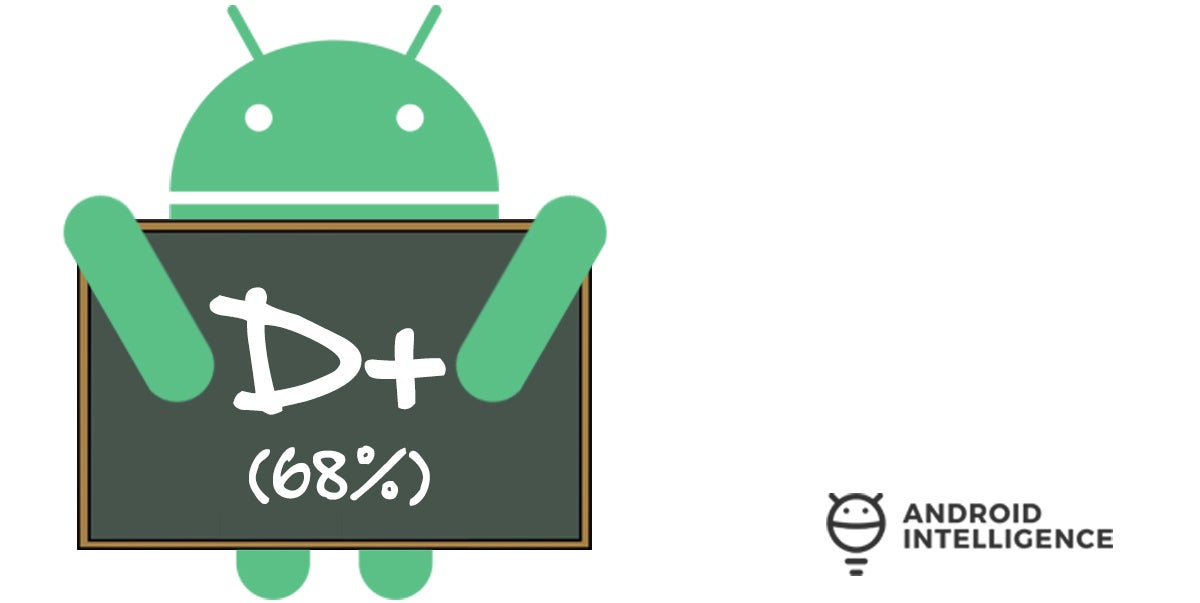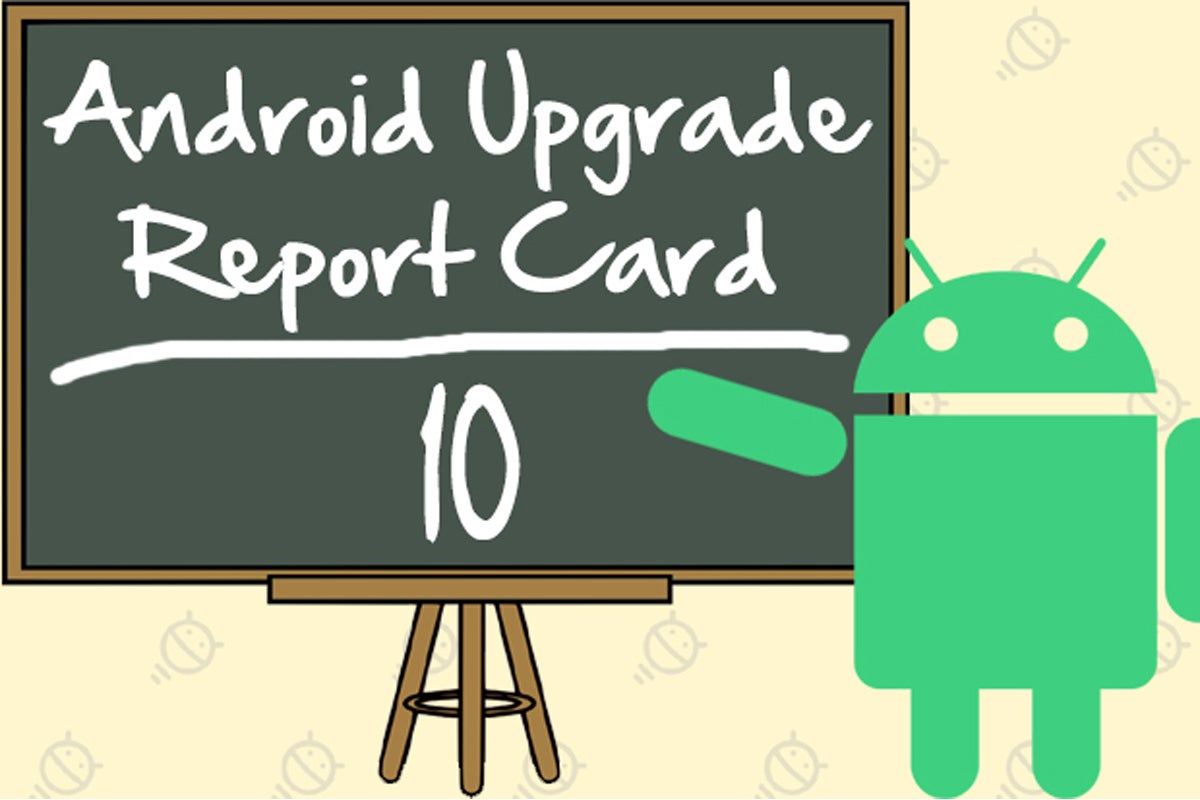I'm not gonna lie: This time of year is usually a bit of downer here in the land o' Android analysis.
I've been tracking device-makers' speed at sending out Android operating system updates to their devices for quite a while now, y'see — since somewhere around the early 1800s. And with rare exception, the results are pretty much always bad news.
Calling it "bad news" is probably being generous: With almost every year in recent memory, we've seen upgrade delivery performance from most of the big Android device-makers get progressively worse, despite Google's ongoing efforts to make the process easier. Last year was a slight exception, with a couple of moderate improvements, but it was still a ridiculously depressing picture all in all — with only two non-failing grades in a sea of cold indifference.
And that was the first true test of Google's Project Treble, a massive effort to separate Android into multiple layers so that phone-makers could perform updates more quickly and efficiently, without having to mess with any lower-level code for every new Android version. It was the year everything was supposed to get meaningfully better. But it didn't — at least nowhere near the level it should have.
Well, this year, for the first time in as long as I can remember, there's cause for optimism. Only the slightest sliver of optimism, mind you, but hey — it's something. And it's a pretty noticeable contrast to the typical feeling these results provide.
So without further ado, now that we're six full months past the launch of Android 10, it's time to step back and look at who's making upgrades a priority and who's treating them as an afterthought. Get ready for some data-driven truths.
(Want the full nitty-gritty on how these grades were calculated? You can find a detailed breakdown of the formula and every element taken into account at the very end of this article.)
 JR Raphael/Google
JR Raphael/Google - Length of time for upgrade to reach current flagship: 0 days (60/60 points)
- Length of time for upgrade to reach previous-gen flagship: 0 days (30/30 points)
- Communication: Excellent (10/10 points)
Seeing Google at the top of the heap is probably no huge surprise, but believe it or not, this is only the second year Google has ever received a 100% score in this analysis. Up until last year, the company had always either faltered — slightly — with its previous-gen flagship, or at the very least had lost some points for leaving certain models of its phones hanging longer than others and then failing to communicate anything about its progress.
With Android 10, though, there's really nothing to complain about and no points to dock. Google announced Android 10 and then started rolling the software out to its then-current-gen Pixel 3 flagship and its then-previous-gen Pixel 2 model on the very same day. (For the purposes of this analysis, it's the start of a rollout — to a flagship phone model in the U.S. — that counts, as you can read about in more detail here.) Google even delivered a little bonus and included its original 2016 Pixel phone, which is well out of its window of guaranteed updates, in the mix.
And while the usual "rolling out in waves" asterisk applied to a certain degree, Android 10 made its way to all Pixel owners within a reasonable amount of time, without the need for any extra communication beyond the company's initial announcement.
Pixel upgrades may not always be immediate, given that staged rollout process Google often likes to use, but they are always quite speedy — and consistently in a league of their own. Sure, we could argue that Google has a unique advantage in that it's both the manufacturer of the devices and the maker of the software, but guess what? That's part of the package.
And the results tell you all there is to know: Google's phones are without question the most reliable way to receive ongoing updates in a timely manner on Android. It's the only company that overtly makes a guarantee about that, let alone delivers on it — and it's the only company that now offers such support for a full three years from a phone's launch date, compared to the typical two-year window, thereby giving its devices even greater long-term value.
OnePlus
 JR Raphael/Google
JR Raphael/Google - Length of time for upgrade to reach current flagship: 18 days (58/60 points)
- Length of time for upgrade to reach previous-gen flagship: 93 days (24/30 points)
- Communication: Poor (3/10 points)
Coming into second place for its third straight year now, OnePlus did admirably well with getting Android 10 onto all of its recent devices. The company's current pair of flagships, the OnePlus 7 and OnePlus 7 Pro, saw their upgrades at the same time in late September — an impressive 18 days after the software's release. The dual previous-gen flagships, meanwhile — the OnePlus 6 and 6T — were initially set to be upgraded in November but ended up being pushed back to early December due to some issues with the original rollout. That still puts them at just over 90 days from Android 10's launch date, which is by no means exemplary but also isn't awful, all considered.
As has been the case in the past, OnePlus didn't do much in the way of communication with customers — no official estimates, no promises, no meaningful updates or ETAs along the way. The company's communication is mostly limited to announcements in its forums when a rollout is beginning. It's more than some companies offer but still not enough; if you own a OnePlus device, all you really can do is wait blindly and hope the upgrade might show up on your phone sometime soon.
Still, it's a commendable all-around performance, and it's heartening to see OnePlus continuing to steadily improve with each passing year. (While it did rather astonishingly hold the second place position the past two years, its scores for 2019 and 2018 were a 74% C and a 65% D, respectively — not exactly what you'd expect to see in the silver-medal spot.)
It'd sure be nice to see a couple more A-level scores in the mix, but a solid B-range performance isn't bad at all. Unfortunately, things get way, way worse from here.
Samsung
 JR Raphael/Google
JR Raphael/Google - Length of time for upgrade to reach current flagship: 106 days (47/60 points)
- Length of time for upgrade to reach previous-gen flagship: 147 days (21/30 points)
- Communication: Poor (0/10 points)
Samsung's gotten some serious props for improving its upgrade performance with this year's Android 10 rollout — and it absolutely should! The company did better this go-round than it has in ages, with the first U.S. rollout of Android 10 reaching its current-gen Galaxy S10 flagship in mid-December and its current-gen Note 10 flagship just slightly later in the month. (Since Samsung treats its Galaxy S and Galaxy Note phones as co-flagships, I look at the delivery time to both devices and then average it to achieve a single score.)
Still, we can't grade Samsung only relative to its own past letdowns. After all, when the bar's been set embarrassingly low for so long, "not entirely horrible" suddenly seems grand. But in and of itself, sending out an Android upgrade over a hundred days after its release is nothing to celebrate. And even in the Samsung-specific big picture, all this performance actually does is return the company to the level of adequacy it achieved five years ago, with 2014's Android 5.0 Lollipop rollout.
The same can be said for Samsung's previous-gen flagship performance — which, again, is a massive improvement over last year's embarrassing showing but still is ultimately just sending software to a top-dollar, one-year-old phone five months late. And, again, it still basically just puts Samsung back where it was with its then-underwhelming 2014 level of Android upgrade performance. Adding insult to injury, Samsung never makes any effort to communicate with customers about the process or what can be expected along the way.
I've said it before, and I'll say it again: Samsung can — and should — do better. Particularly for a company of its size and with its immense financial and engineering-related resources, not being able to deliver updates to people after all those months (now with the benefits of Google's Project Treble improvements in place, no less) comes down to one thing and one thing only: priorities.
NEXT PAGE: The Hall of Shame "F" club — and a few honorable mentions















